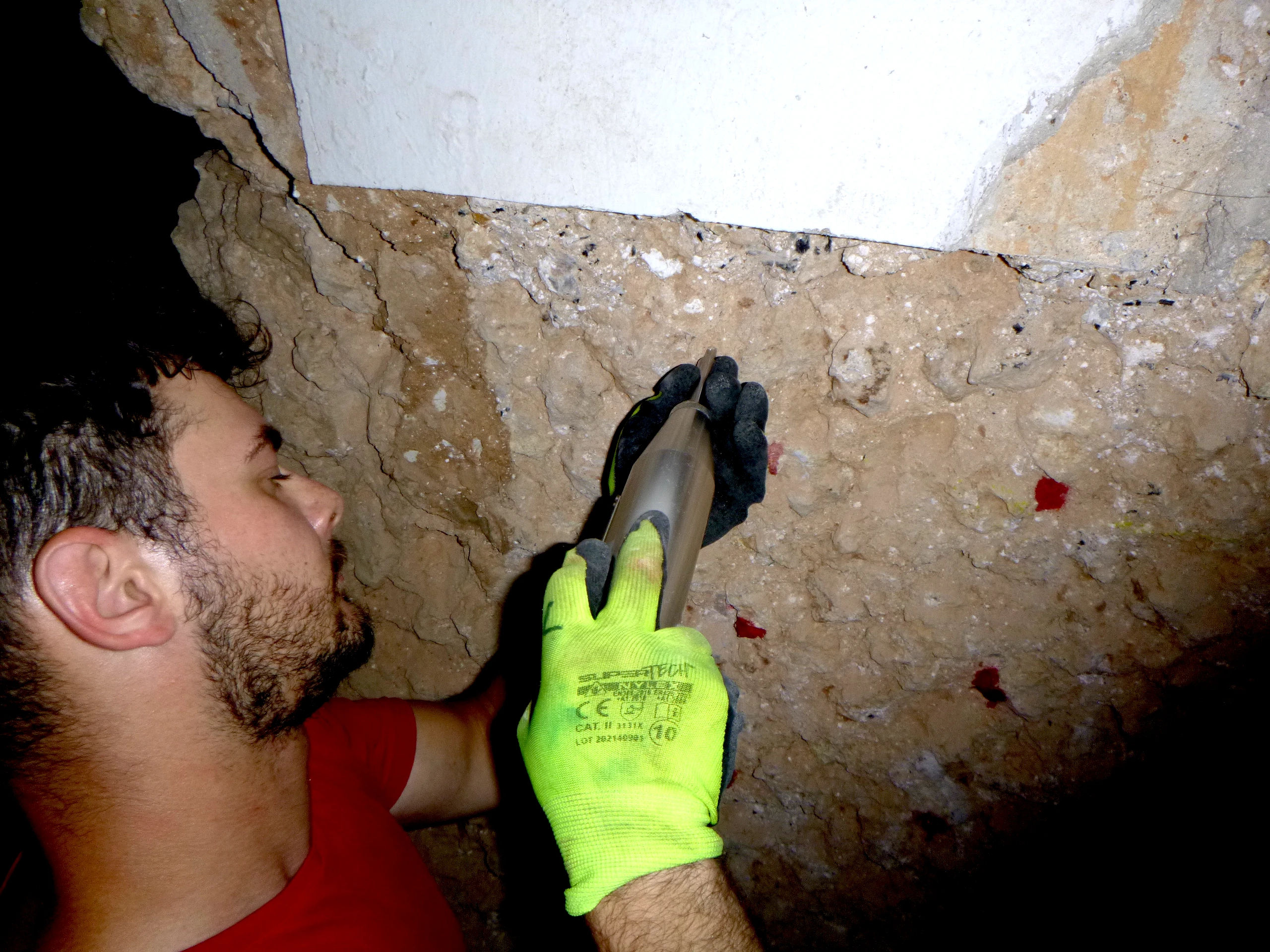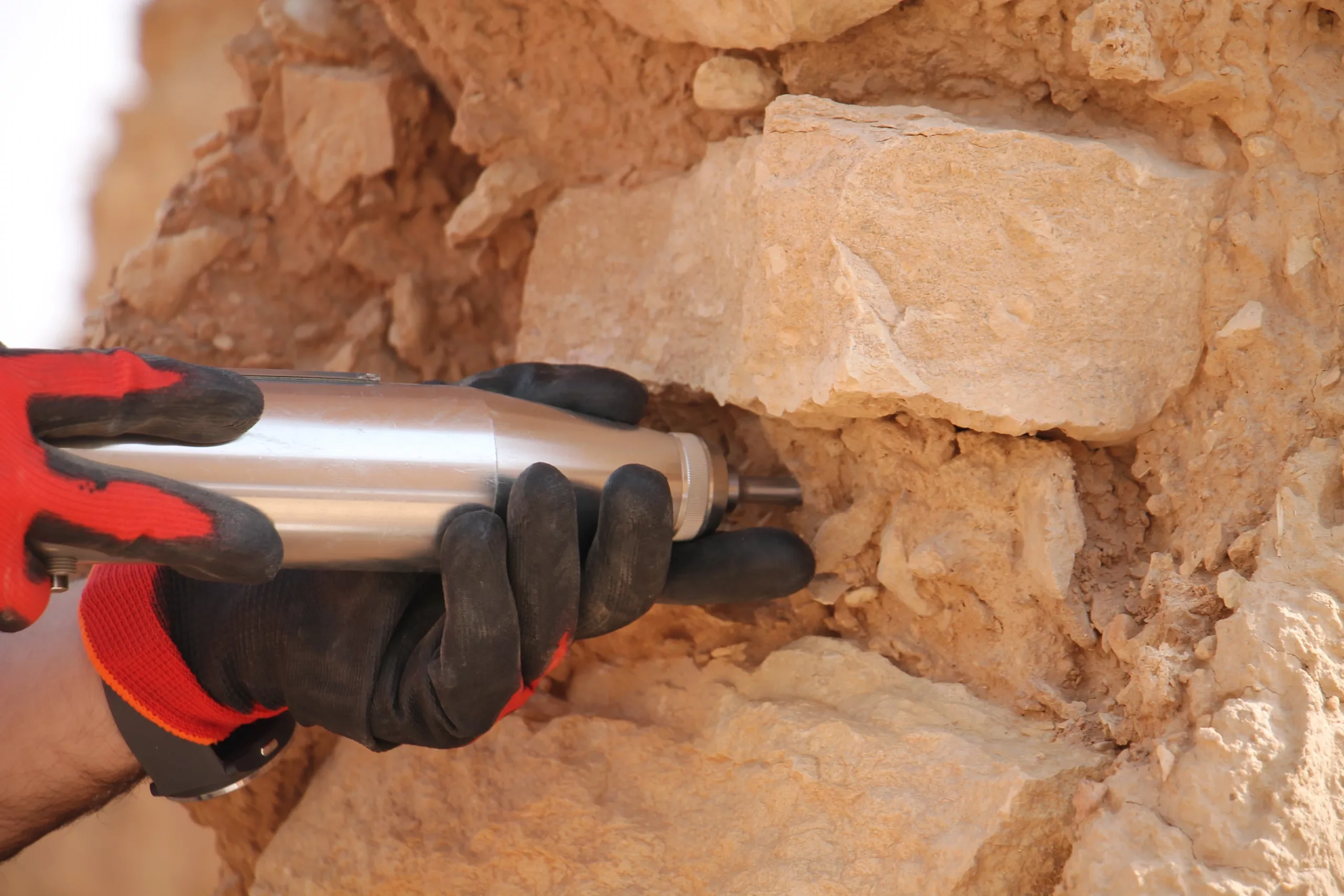


Rebound hammer test on mortar
The rebound hammer test on mortar is a non-destructive testing method that can provide information on the quality of mortar by measuring its surface hardness and correlating it with its resistance using empirical functions. The method is used to estimate the resistance of the surface or pseudo-surface mortar of masonry walls, to investigate the homogeneity of the mechanical properties of the same, and to delineate zones or areas of poor quality or deterioration. However, the method is not intended to replace the compression test on mortar specimens obtained by the standard method.
The mortar rebound hammer test consists of a cylindrical body with a rod protruding from one end of the casing and loaded by a spring. The rod – with a smaller diameter than that of the concrete rebound hammer or the “N” type in order to fit into the mortar joints of reduced height – is pressed against the surface to be tested until it reaches the limit of its stroke. An internal mass then hits the ring nut rigidly fixed to the rod, which is in contact with the surface to be tested. The rebound height of the mass is indicated by an index on a graduated scale and is proportional to the surface hardness of the mortar (the relationship between hardness and strength is purely empirical and probabilistic; the impact energy is lower than that of the concrete rebound hammer and is 0.169J / 0.169MPa). Measuring range: 1.4 – 25 MPa.
Reference standards: RILEM MS.D.7; ASTM C 805.
